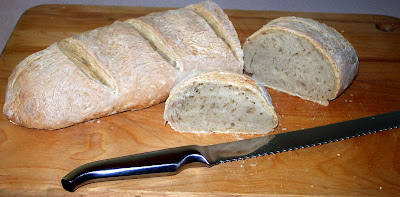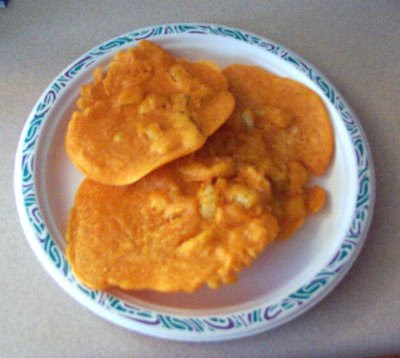Cocina means both kitchen and cookery in Spanish. My name is Lou, but everyone here calls me Luis.
This is about food in Puerto Rico. It's not necessarily about Puerto Rican food, although there's lots of that, but more about what we eat here. Food is a challenge here for me, an Italian-American having lived in the Boston area for the last twenty years. Now that I live in Puerto Rico, I realize the wealth and diversity of ingredients I took for granted. The nearest Whole Foods is 1,400 miles away, and all my salumi and Italian cheeses come shipped over night from sympathetic family and friends on the mainland.
Not that we don't have abundant and wonderful ingredients here: we do. On our six acres alone we have pineapple, yuca, bread fruit, oranges, lemons, grapefruit, plantains, yams, and several types of bananas. All the grocery stores carry pork, beef, and chicken, but we're lucky to find Italian sausage once a month.
Why the lack of culinary diversity? I suppose it's because of the lack of cultural diversity. Nearly everyone here is Puerto Rican. We don't have Italian, Greek, Armenian, Chinese, Korean, or middle-eastern neighborhoods here, so there's no real demand for the food of those cultures.
We also don't have ethnic restaurants (I don't count the fast-food faux Mexican and Chinese places). I haven't had pizza in two years, let alone gyros, falafel, pad Thai, dim sum, bagels, lox, and many, many others. Oddly enough, I can get great Sushi.
I should mention that I live in Aguas Buenas in the central-mountain region of Puerto Rico. I'm sure many of the foods I mentioned are available in San Juan and some of the bigger cities, but we seldom go there. Caguas is the closest "big" city, and that's where we do most of our shopping. Caguas also has a lot of American fast-food restaurants, such as McDonald's, Burger King, Churches Chicken, and more, but I was never a fan of fast food; I simply won't eat that stuff.
As I mentioned, this as about what we eat here. My mother-in-law is a great Puerto Rican cook, and I have my Italian-American specialties. Now that I'm retired (at the tender age of 50), I am experimenting with any kind of food I can make with the ingredients available.
























